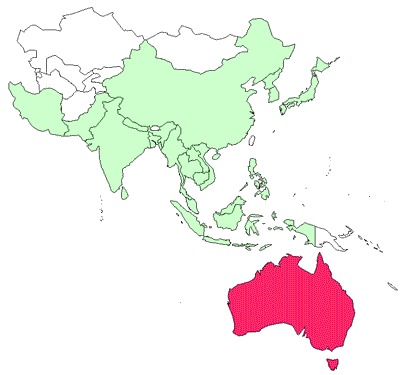Diseases of molluscs
Parasitic diseases—Infection with Marteilia sydneyi (QX disease)
CLICK ON IMAGE TO ENLARGE

Source: R Adlard
Signs of disease
Important: animals with disease may show one or more of the signs below, but disease may still be present in the absence of any signs.
Disease signs at the farm level
- high mortalities of up to 90%
Clinical signs of disease in an infected animal
- body very shrunken
- generally poor condition
- oysters may die from starvation within 60 days of infection
Gross signs of disease in an infected animal
- colourless and translucent tissues because of complete resorption of gonad
- digestive gland (usually a deep green colour) becomes pale yellow-brown
Disease agent
QX disease is caused by the haplosporidium protozoan Marteilia sydneyi of the Paramyxea phylum. In Europe, a similar disease is caused by Marteilia refringens in different species of shellfish.
Host range
Molluscs known to be susceptible to the disease:
Sydney rock oyster (Saccostrea glomerata)
Presence in Asia–Pacific

Infection with M. sydneyi has been officially reported from Australia.
Epidemiology
- Despite the presence of the pathogen, disease has never been observed in some eastern Australian estuaries.
- Oysters maybe susceptible to infection for a period of only two weeks.
- Warm temperatures favour parasite development, leading to greatest mortality at the end of summer.
- The disease is associated with low salinity and high water temperature.
- Infection is horizontal; the pathogen passes from the environment into the epithelium of palps and gills where it proliferates without forming spores.
- The cultured Pacific oyster is relatively resistant to QX disease.
- A selective breeding program for QX resistance in Sydney rock oysters shows some promise, but its level of success will not be confirmed for some years.
For a detailed account of the known lifecycle of the parasite, see lifecycle of Marteilia sydneyi.
Differential diagnosis
The differential diagnostic table and the list of similar diseases appearing at the bottom of each disease page refer only to the diseases covered by this field guide. Gross signs observed might well be representative of a wider range of diseases not included here. Therefore, these diagnostic aids should not be read as a guide to a definitive diagnosis, but rather as a tool to help identify the listed diseases that most closely account for the gross signs.
The clinical signs of infection with Marteilia sydneyi are practically identical to those of infection with other haplosporidia (ie high mortalities associated with colourless and translucent tissues, poor condition, pale digestive gland and a shrunken body). Therefore, any presumptive diagnosis requires histological laboratory examination.
Sample collection
Because of uncertainty in differentiating diseases using only gross signs, and because some aquatic animal disease agents might pose a risk to humans, you should not try to collect samples unless you have been trained. Instead, you should phone your national hotline number and report your observations. If samples have to be collected, the agency taking the call will advise you on what you need to do. Local or district fisheries/veterinary authorities could advise you on sampling.
Emergency disease hotline
For your national emergency disease hotline number, see Whom to contact if you suspect a disease.
Further reading
http://www.oie.int/aac/eng/cards/en_diseasecard.htm
http://www.pac.dfo-mpo.gc.ca/sci/shelldis/pages/marsydoy_e.htm
These hyperlinks were correct and functioning at the time of publication.

